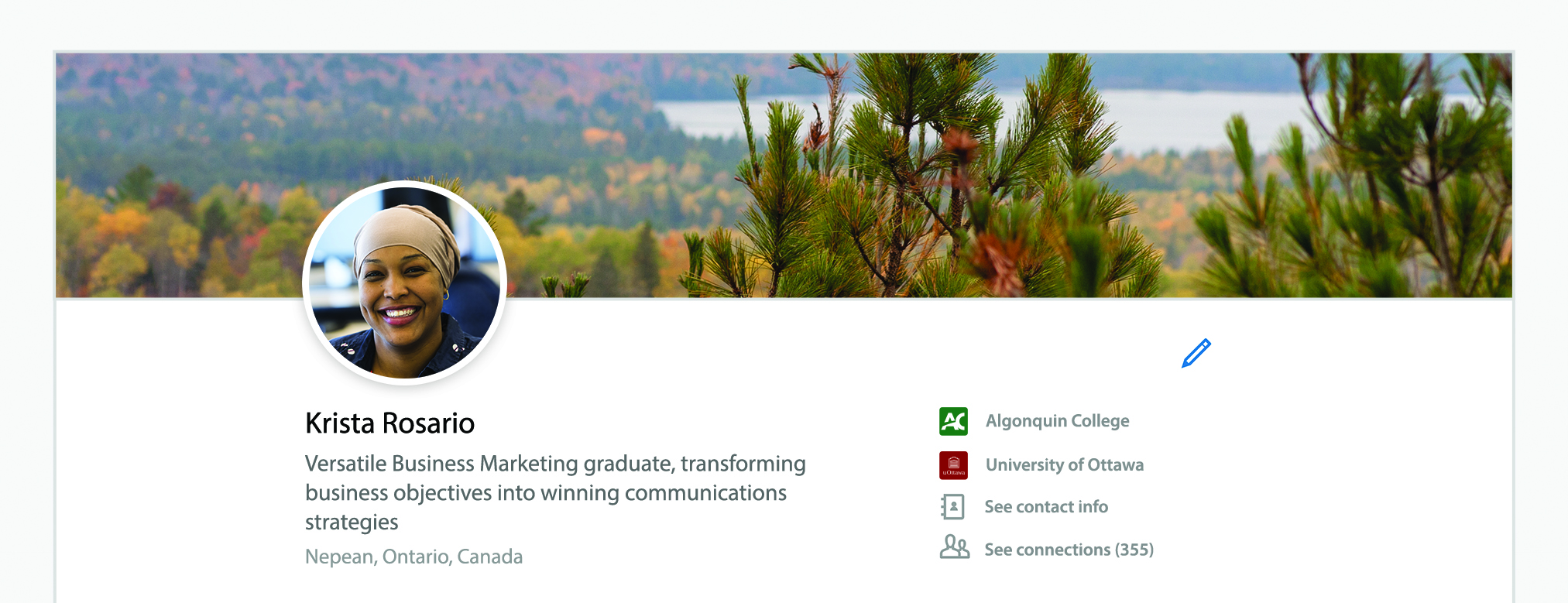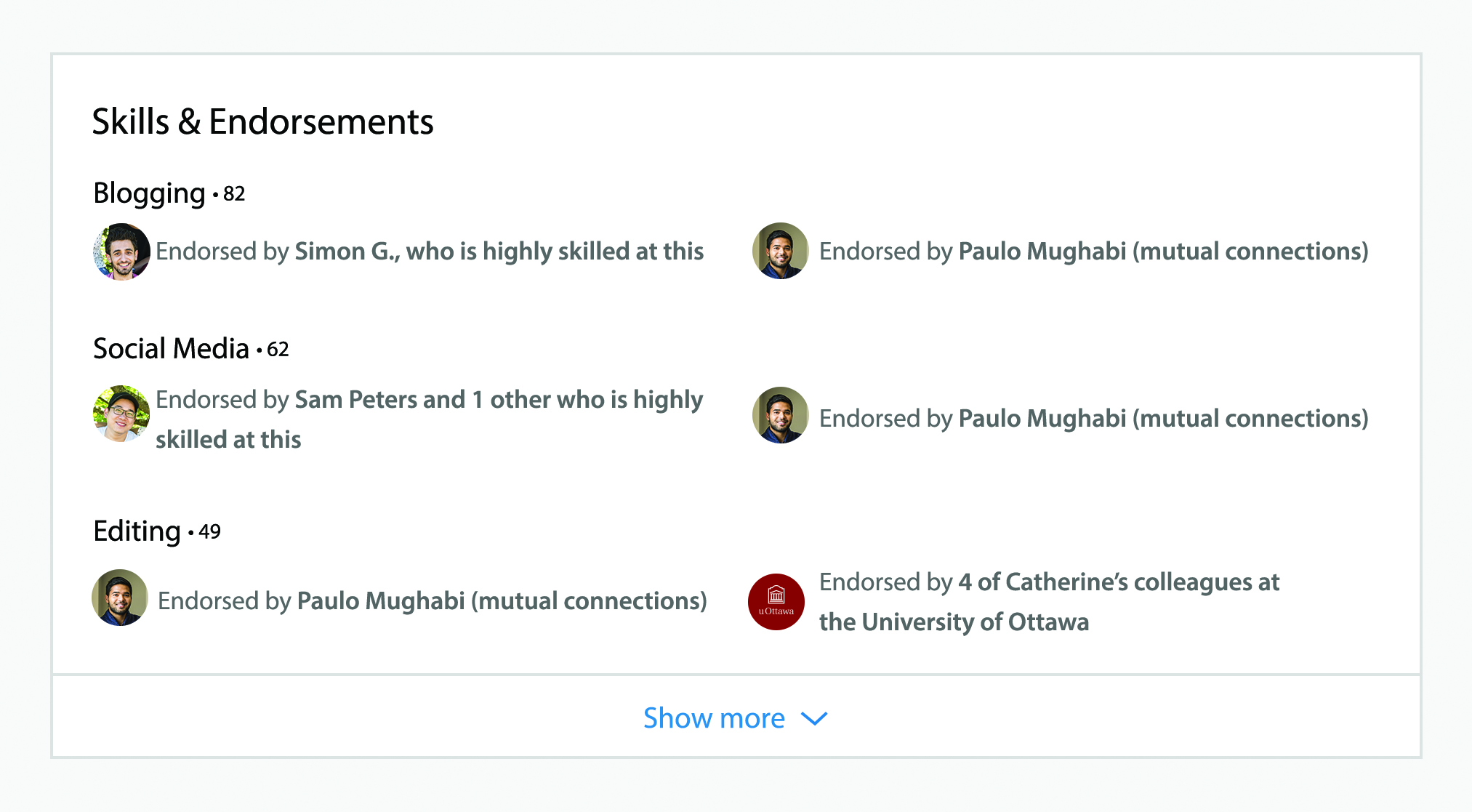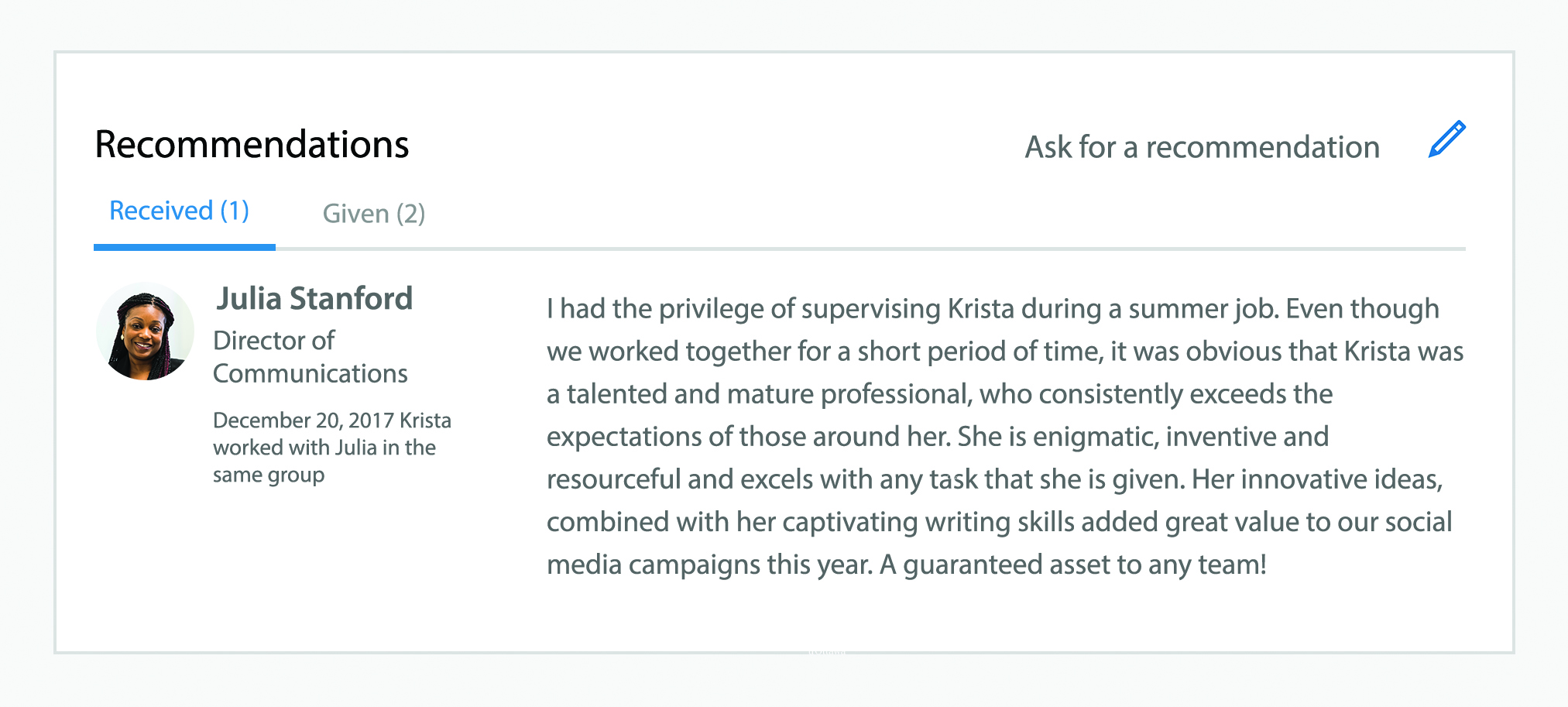26 Method 2: Social Networking Websites
Method 2: Use career and social networking websites.
Social Media
Googling an applicant can be a very quick and easy method to prescreen and find out about that person’s professionalism or lack thereof.
Among the most common social media sites are LinkedIn, Instagram/Facebook, and Twitter. With these and all the other social media options out there, managing your web presence and maintaining a professional digital footprint can directly impact your chances of finding employment. Ensure that your information is up-to-date and that the images and content you are publicizing across your social media platforms reflect you positively and professionally. Spend time virtually cleaning up your accounts before you start your job search!
Now, you can use these platforms to:
- Connect with people you don’t already know and build mutually-beneficial career-based relationships.
- Search for jobs that are being advertised and apply directly through the platforms.
- Research companies and people of interest.
- Reach out to your networks, exchange information, and maintain regular contact.
- Post status updates or send messages that indicate you are looking for work or information.
- Create and post content, and participate in discussions or follow companies and groups.
LinkedIn is a social networking website with the largest online professional network in the world, with the fastest-growing demographic being students and recent graduates. LinkedIn provides you with the resources to access various professional networks, key decision-makers, recruiters, and learning opportunities to help you search for meaningful work. Just having a LinkedIn account will not guarantee you a job, however, many recruiters have successfully hired using a social network and, the largest percentage hired using LinkedIn. As this tool continues to evolve, creating a captivating profile is essential to effectively self-market, generate connections, identify leads, grow your professional brand, and make a professional online impression.
Many employers use LinkedIn to prescreen and research applicants.
LinkedIn Profile Essentials
Aim for an All-Star rating. There is nothing more disappointing to your audience than an incomplete or poorly maintained profile. Make sure you have completed all of the suggested sections to generate an All-Star rating; this will increase your visibility and encourage other professionals to connect with you. If you want to be 40x more likely to be viewed, pay attention to your Profile Completion Meter and ensure the following sections are complete:
- Skills (+5), current position, two past positions, photo, location, summary, education, industry, and location
- At least 50 connections
Use the following tips to create an effective profile that will help you stand out:
- Come up with a targeted and attractive headline.
You must stand out and grab the attention of the reader by describing what you do, and what added benefits you can offer the reader. Try to be rich with keywords when possible and clear, intentional, and succinct to fit within the 120-character limit. - Increase your views with a professional-looking photo.
With access to high-resolution phone cameras these days, you don’t necessarily have to get a professional photo taken. When taking your own headshot:- Include only your head and shoulders.
- Ensure that the quality of the image is clear, you are in a well-lit space, and that the background is not distracting.
- Look directly at the camera and smile.
- Avoid wearing accessories like hats or sunglasses that may hide your face.
- Dress appropriately for your career goal.
- Build a conversational and informative summary.
Ask yourself what you want your target audience to know about you. A well-crafted summary is an opportunity for you to highlight your skills, experience, and your future career aspirations while characterizing elements of your personality in the tone you are writing in. When writing your summary consider:-
- Making your first two lines captivating as this is all that is displayed at first glance.
- Write in the first person. Use “I”, “me”, “my”, and “mine”. Consider adapting your 30-second elevator pitch and using it here.
- Incorporating industry keywords in order to be more visible in recruiter searches.
- Including information on your background, what you can offer, your professional goals, and a call to action.

-
- Show your experience.
Always add rich descriptions to your experience sections. These can reflect the STAR technique you used to develop your resume descriptions. In addition, emphasize the skills you gained in your day-to-day tasks and include details of your various accomplishments from your paid or unpaid part-time, full-time, or summer work experience. Listing in bullet points is the preferred format. - Share your accomplishments.
Add in additional sections to showcase some of the other accomplishments that might set you apart from your competition. Including information on additional certifications or awards received can be impressive.
Highlight your project work. Don’t minimalize your project experience; describe the practical experience you gained so that readers can see how this translates into on-the-job skills. You can provide a relevant URL to the project and connect your team members who are also LinkedIn members. - Showcase your education.
List all of your post-secondary education and relevant coursework. Typically, after completing post-secondary, you would not need to list your high school education here. Some employers and recruiters may prefer to seek candidates that graduated from a specific school or program. Notable accomplishments such as achieving a high GPA or relevant courses can be included in the description to show that you are a high-performing candidate. - Promote your skills.
Paint a picture of what you can offer a recruiter or an employer. Start by listing at least five skills you have learned throughout your academic, volunteer, and work experiences. As you develop more skills, update your profile to reflect this. Identify both soft skills that are transferable from one field to another and hard skills that you learned during formal training or on the job and ensure that they relate to your job goal. When your connections endorse you for your skills, you increase your credibility and improve your search ranking. - Personalize your URL.
By default, when you start your LinkedIn account you are given a public URL. With the increase in LinkedIn’s popularity, you may want to use your URL to promote yourself in the signature of your email address, on your resume, and on your business networking cards. Personalizing your URL allows you to make it shorter and more memorable and ultimately enhances your personal brand. - Include multimedia.
Make your profile more visually appealing by adding photos, videos, or slideshow presentations. This gives a reader an opportunity to see examples of your work, similar to an online portfolio. - Build your connections through common interests and community.
Don’t wait until you graduate to build up your connections; spend time increasing your contacts now. Aim for 50 as you’re starting out, but the more connections the better! You can connect with friends, classmates, professors, or people that you’ve volunteered and worked with. Be proactive in your approach, and you can start by syncing your email contacts to create a list of suggested connections. Only send invitations to those you are comfortable connecting with; avoid randomly adding people you don’t know so that you can keep up-to-date and help each other through recommendations and information about relevant opportunities.
- Customize your LinkedIn invitations and connect in a timely manner.
Always send a personalized message when you’re interested in connecting with someone. If you’ve met them before, make sure to place yourself by reminding them of when and where you’ve met. If you haven’t met before, let them know why you would like to connect (i.e. I see that you are a graduate from the same program, and I was wondering what advice you might have for a new graduate looking for work in the field?). After you’ve met someone, don’t wait too long before sending an invitation, your timeliness will ensure that they remember who you are and show your interest. - Ask people for endorsements and recommendations and endorse and recommend others.
There is no better way to build your credibility than to have your connections attest to what you can do. Don’t be afraid to ask your connections for endorsements and recommendations, and always offer to reciprocate your request for them. People will be more likely to follow through with your request when they are gaining something out of it too. Having others authenticate your skills and qualifications makes you a more credible professional in your network. When making a request you should be polite, personalize your invitation, and provide ideas of what you would like them to write about. Always send a thank you note afterward to show your appreciation.

- Search for jobs.
Look through LinkedIn’s job bank and search for jobs of interest; some employers post exclusively on LinkedIn. Make a note of any existing connections that you have that work at the company you are applying to. Pay particular attention if you are connected to a hiring manager. For instance, are they a 1st or 2nd-degree connection? If so, get in touch with them to show your interest in the role, and find out more about the job and company. Use the knowledge gained from your connections to tailor your job application and make yourself stand out. Under the Jobs tab, don’t forget to set your career interests and let recruiters know you’re open so recommendations will be more tailored to your goal. - Find alumni.
Narrow your search by date and program and explore where other graduates work and what jobs they are in. This can be a good way to identify companies that have hired previous graduates from your program. Reach out to alumni to connect and ask them to provide you with advice on how they were successful in finding work in their field. - Conduct a people search.
Use LinkedIn to find professionals, and track employees’ career paths before they started working at the company that you’re interested in. This information might give you a better idea of what kind of experience or skills the company wants in a new hire. - Follow companies.
Search for and follow companies of interest to learn more about a company and its employees. Company Pages give you an excellent overview of an organization, list job openings, and indicate products and services. For instance, the “Careers” tab allows you to see job postings and testimonials from current employees. This is a great way to get an “insider’s perspective” on a particular company. By following a company, updates about new jobs, products, or events will appear in your news feed on your LinkedIn home page. Use the company pages to help prepare you for your next interview. - Stay active.
It’s not just about who you know; it’s about who knows you. Stay on your network’s radar by updating your LinkedIn status often; you can talk about what you’re reading, working on, and more. Additionally, you can create original content and publish articles on LinkedIn Publisher, you can actively post status updates that are relevant to your target market, and engage in conversations with your network about all kinds of different topics. React to other people’s posts, share, and like regularly.

- Don’t be a passive participant.
LinkedIn is meant to be a conversational platform where information and advice can be shared freely. When you create a post or share an article, engage with your network by posing open-ended questions that they can respond to in the comments section. Continue the conversation by replying to as many messages as possible. People want to get to know you, and when you engage with them this will increase your visibility and result in more followers. Similarly, spend time reacting and responding to other people’s content as well, and thank them for sharing. - Join Groups.
The obvious benefits of joining groups include sharing knowledge and learning from other professionals with similar interest areas or expertise. A useful “Groups” feature is that group members can message each other for free, without being connected (with the exception of certain privacy settings). In building rapport with group members by participating in collaborative discussions, you can invite them to connect on LinkedIn and continually grow your network. - Be reachable.
Include other ways you’d like to be contacted, such as an email address or phone number. You can sync your account if you are active on other social media platforms, such as Twitter. If you have your own website, indicate this in the Contact and Personal Info section as well. - Know when to go public.
You want to show your readers as much as possible to entice them to view your profile and make a connection. Make sure that you have adjusted your settings to show your readers the most important information. That said, if you‘re revamping your profile and want to launch when it’s fully complete, think about going into private mode until you’ve made the changes. - Stay connected with the apps.
Most of LinkedIn’s website traffic comes from their mobile apps. In addition to the LinkedIn Mobile app, they include a suite of other apps that help you target your approach. Here are some that may be helpful:- Job Search – Search and apply for jobs
- Lookup – Find, learn about, and contact coworkers
- Learning – Personalized recommendations and courses taught by industry experts
- SlideShare – A selection of presentations, infographics, and videos about any topic
- Groups – Access to groups of likeminded individuals
- Pulse – Top industry news
- Additional Resources

